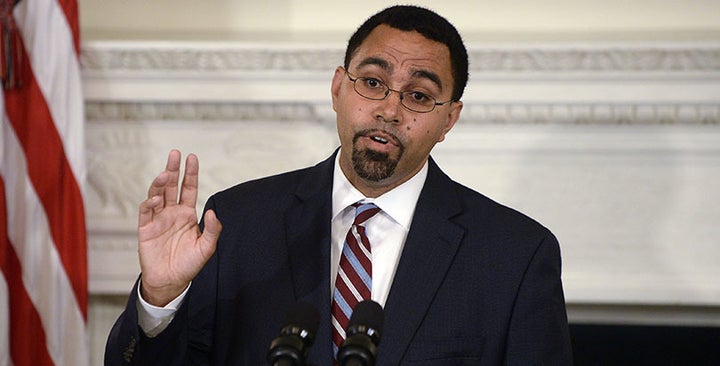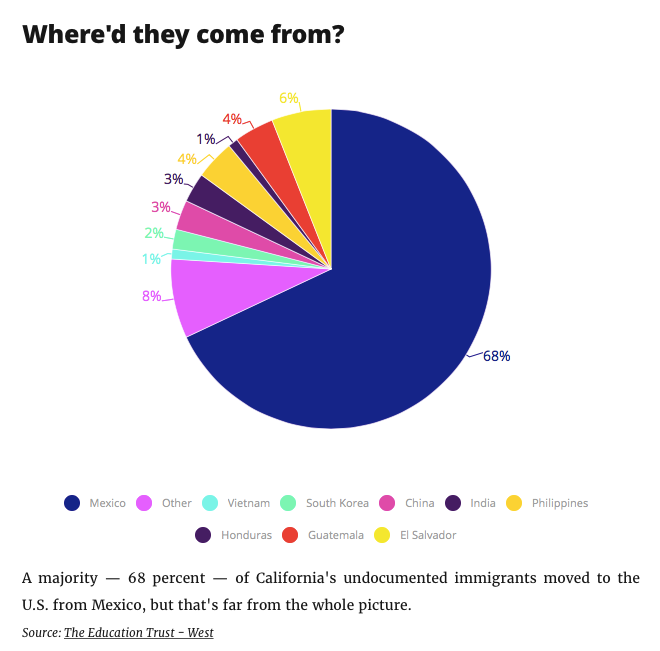
By Mark Keierleber
Much attention has focused recently on a heightened fear of deportation among undocumented K-12 students, but the number of children actually affected is far greater, according to a new report from The Education Trust–West.
About 250,000 undocumented children between the ages of 3 and 17 are enrolled in California public schools, says the report, released this month by the progressive education reform advocacy group. But three times as many California students — 750,000 — have undocumented parents. That’s one in eight children enrolled in California schools, said Ryan Smith, the group’s executive director.
Whether a student is undocumented, participates in the federal Deferred Action for Childhood Arrivals (DACA) program, or is part of a family with both undocumented and legal residents, “the fear of detention and deportation affects the entire family,” Smith told The 74.
Nationwide, about a quarter of students are immigrants or children of immigrants. In the face of President Trump’s agenda of strict immigration enforcement, districts across the country have adopted “sanctuary school” policies to protect student data, ensure consistent responses across schools, and ban federal immigration agents from campus if they don’t have a warrant.
“The bottom line is that within schools, we should do everything possible to make sure we’re communicating with all of our families about these threats and that we have updated contact information to include info about extended family members,” Smith said. “Education leaders must also promote policies that establish sanctuary campuses as well as provide resources for undocumented students and their families within schools.”
Then-President Barack Obama enacted DACA in 2012 to allow undocumented immigrants who were brought to the U.S. as children to continue to pursue their education. Following news that the Trump administration had deported a DACA student, the president said last week that undocumented students brought to the U.S. illegally, known as DREAMers, can “rest easy.” However, Attorney General Jeff Sessions said that all undocumented immigrants, including students, are “subject to being deported.”
In December, California Superintendent of Public Instruction Tom Torlakson released a letter encouraging public schools in the state to declare themselves safe havens for undocumented students and their parents. Since then, state Education Department figures show, about 60 schools and county education offices have done so. Those schools serve more than 1.5 million students.

Nationally, about 1 million undocumented children live in the U.S., and an estimated 5.5 million children have at least one undocumented parent. Of those children, 4.5 million are U.S. citizens.
Following Trump’s election, more than 1,700 educators from across the country signed a petition calling on the new administration to leave DACA in place. Among the signers was John King, Obama’s education secretary, who recently became The Education Trust’s president and CEO. In a statement to The 74, King argued that the nation is best served by ensuring that DACA students have access to an education.
“As educators, we stand up for our students — that is why so many education leaders have signed on to the petition,” King said. “Any secretary of education, regardless of party, should work to advance the nation’s economic future by protecting DACA — and advocating for comprehensive immigration reform.”
In a separate interview, King told The 74: “The actions that the administration has taken around immigration and refugees are ... inconsistent with the law and, I believe, inconsistent with fundamental American values. So those are very worrisome signs.”
